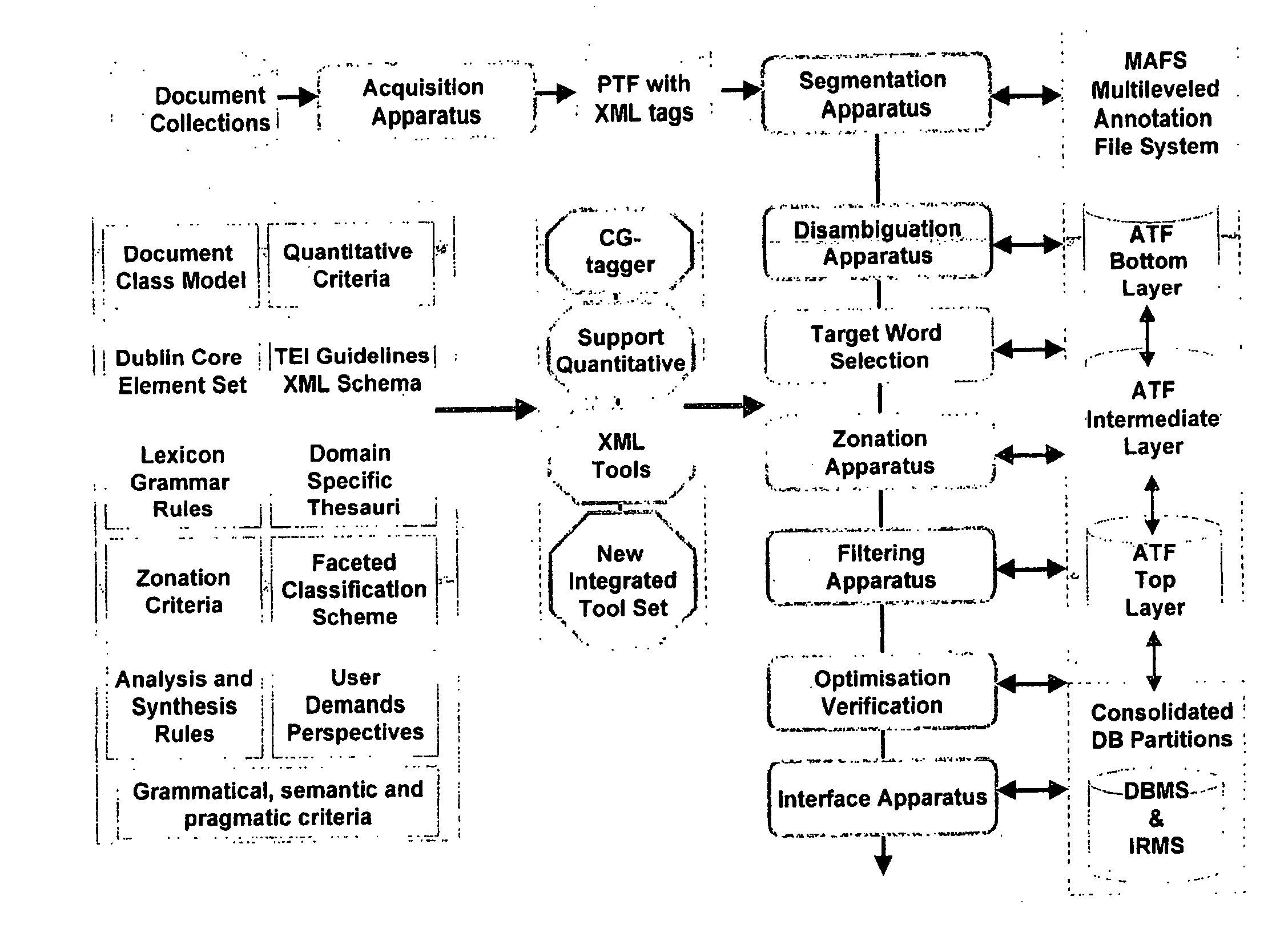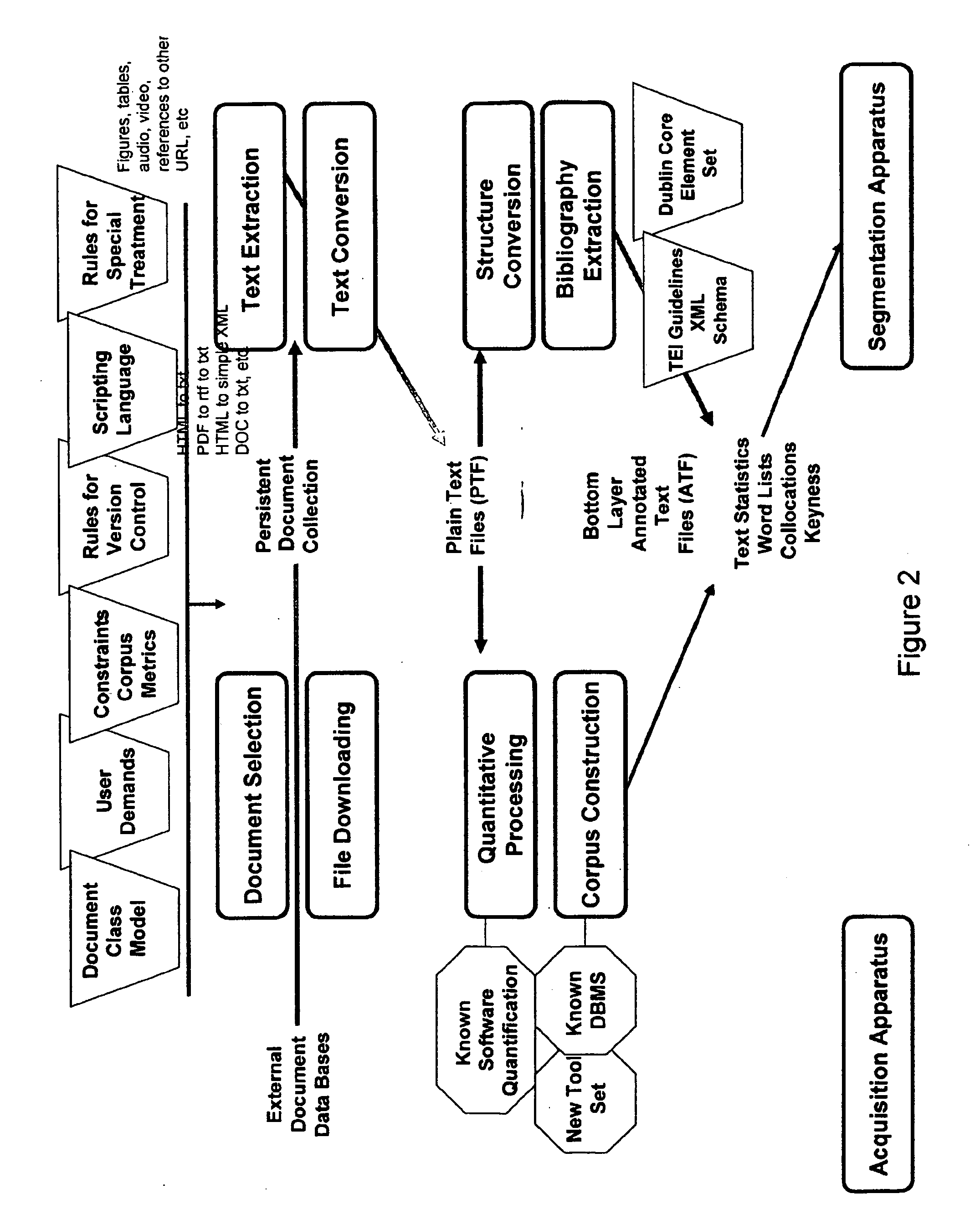Method and apparatus for textual exploration discovery
a textual exploration and text technology, applied in the field of textual exploration and discovery methods and systems, can solve the problems of not being able to construct a description for a word, difficult to quickly locate the important parts, and the burden on indexing devices also increasing, so as to increase the user's ‘insight’
- Summary
- Abstract
- Description
- Claims
- Application Information
AI Technical Summary
Benefits of technology
Problems solved by technology
Method used
Image
Examples
example
[0515] A simple grammatical request pattern as (adjective followed by noun) will produce ‘statlig selskap’ as one of its results (state company, i.e., two nouns in English). In the collocation patterns covering 23 governmental reports related to oil affairs (when expanded with grammatical annotations and filtered accordingly), the file shows that ‘statlig’ co-occurs 117 in the first position to the left of ‘selskap’. Since the grammatical word classes in ‘statlig selskap’ conform to a known simple grammar pattern, and due to the co-occurrence frequency, ‘statlig selskap’ will be determined to be a phrase, (and treated as a ‘single term’—that is a contact to the underlying text). Thus the combined use of grammatical information and frequency of proximity information increases the precision regarding the determination of focused words or word constellations in the texts.
[0516] In the Norwegian language ‘statsselskap’ may be considered as near-synonym to ‘statlig selskap’ (a paraphras...
PUM
 Login to View More
Login to View More Abstract
Description
Claims
Application Information
 Login to View More
Login to View More - R&D
- Intellectual Property
- Life Sciences
- Materials
- Tech Scout
- Unparalleled Data Quality
- Higher Quality Content
- 60% Fewer Hallucinations
Browse by: Latest US Patents, China's latest patents, Technical Efficacy Thesaurus, Application Domain, Technology Topic, Popular Technical Reports.
© 2025 PatSnap. All rights reserved.Legal|Privacy policy|Modern Slavery Act Transparency Statement|Sitemap|About US| Contact US: help@patsnap.com



